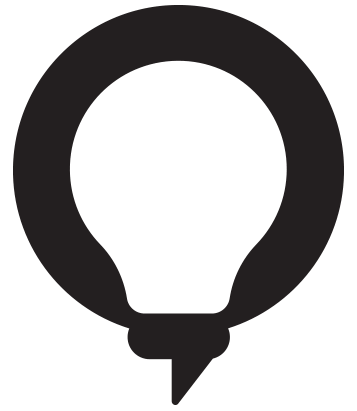Web Policy
 1. University websites should be easy to use and accessible to all, catering to a wide range of skills, reading and comprehension levels, and access points.
1. University websites should be easy to use and accessible to all, catering to a wide range of skills, reading and comprehension levels, and access points.
1.1 Accessibility: By law, university websites must comply with the following accessibility standards:
- Section 508 of the Rehabilitation Act;
- Texas Administrative Code (TAC) Chapter 206, Subchapter C; and
- Web Content Accessibility Guidelines (WCAG) 2.1 A & AA.
While the CMS requires many accessibility standards, just as alt tags with images, it is up to the individual editor to provide useful alt tags. For example, "graduation" conjures up very different imagery than "UT student being handed their diploma on graduation stage". Likewise, "Click Here" fails as a link as it does not provide enough information to the user. A better choice would be, "Click here for Campus Drone Use Guidelines". For more information on accessibility, register for the Best Practices class on UT Learn.
1.2 Reading and comprehension levels are dependent on knowing your audience. A web page written for a university-trained accountant should read very differently than one written for the general public trying to find a UT parking garage. If you do not know your audience, it is recommended you aim for an 8th grade reading level as most adults fall into the average reading level. Monsido, the university's website quality assurance and accessibility tool, can score the reading level of your web pages. User experience (UX) research can help you understand your website's audience in more depth. For more information, register for the Writing for the Web class on UT Learn.
1.3 Web pages should be checked both on the desktop and mobile versions of major web browsers including Chrome, Firefox, and Safari. Pages with high mobile usage, just as Contact and Event pages, should be optimized for mobile viewing. For more information, register for the Web Best Practices class on UT Learn.
1.3.1 The Monsido browser extension provides previews of web pages for a wide variety of mobile devices and accessibility conditions.
 2. University websites should be user-focused and built around a task- and knowledge-based philosophy, minimizing the need for institutional knowledge or knowledge of organizational structure to accomplish tasks or find information.
2. University websites should be user-focused and built around a task- and knowledge-based philosophy, minimizing the need for institutional knowledge or knowledge of organizational structure to accomplish tasks or find information.
2.1 University websites should not duplicate the structure of your organization. While this may seem natural to those in the organization, this design is a barrier to entry for your users and requires them to have deep institutional knowledge. Websites should be built for all users, including new employees, students, and visitors.
2.2 User-focused websites are designed to help users quickly accomplish a task or find the information they are looking for. To do this, you must:
- Know your user(s)
- Know their top tasks
- Have the information they seek or easily direct them to it
2.3 If you do not know your website's users, it is recommended you start with a basic list of primary users and what you do know about them. In the field of UX research, this is called persona building and it will help you make decisions about your website content and organization. FAS Communications can provide templates for persona building and provides a course on stakeholder engagement basics that can help you learn about your user base through interviews and focus groups..
2.4 What are your website users' top tasks and the information they seek? This should be core to your unit's primary service model and reflect what you uniquely do for the university. Look at your website and search analytics to determine what tasks users are trying to accomplish. Are these tasks easy to access on your homepage, through your primary navigation, in your site search, and through well-placed cross-linking? Interviewing your users is also a great way to determine want they want to accomplish on your website. We can help with access to analytics reports and test your navigation with card sorts and page tree testing.
 3. University websites should be cross-departmental or cross-organizational when necessary to support the task-based, knowledge-based philosophy.
3. University websites should be cross-departmental or cross-organizational when necessary to support the task-based, knowledge-based philosophy.
3.1 As our portfolio is involved with almost every aspect of university operations, interacting with multiple units is often required to complete a task. Does your unit's website have the ability to shorten a user's path to task completion? Can you partner with other units to provide all the required information in one digital space? Can DocuSign be used to move the tasks through multiple organizations while digitizing a paper trail? Does a complex process need its own web space, agnostic to ownership? Consider all the processes your website is used for and how they can be modernized.
 4. University websites should be built, maintained, improved, and changed based on data, analytics, ongoing UX research, and evolving user and university needs.
4. University websites should be built, maintained, improved, and changed based on data, analytics, ongoing UX research, and evolving user and university needs.
4.1 As referenced in our Web Resources, university web editors have access to a large amount of existing data and the ability to gather additional data to help make strategic decisions about our websites. Please review the Web Resources to determine what data will be most useful to your decision-making.
4.2 UT Austin uses the Monsido website quality assurance and accessibility tool to scan websites for broken links, policy violations, misspelled words, and violations of federal accessibility laws.
4.2.1 Every website must have at least one user actively monitoring the Monsido scan results and correcting errors.
4.2.2 Site managers and editors are responsible for maintaining content that is accurate and timely. Content should be reviewed at least annually and be updated or deleted as necessary.
4.2.3 Our team will provide Monsido user management and actively monitor and correct web accessibility violations.
4.2.4. Our team can assist with accessing, gathering, and interpreting data.
 5. University websites should articulate the university brand and shared values.
5. University websites should articulate the university brand and shared values.
5.1 UT Drupal Kit CMS websites use templates to achieve a consistent visual brand and usability across all University websites. Templates ensure that common page elements are identical in function and location on each page of the website. Examples of common page design elements include color scheme and font sizes, top navigation, headers and footers, site and page names, and search. Keeping these the same makes the website easier to use and ensures a strong brand impression.
5.2 All university websites will identify their parent organization.
5.3 The web management team will assure templates are being used in a standardized way that provides the best end-user experience.
 6. University websites should help execute strategic goals to be outlined in the University Strategic Plan.
6. University websites should help execute strategic goals to be outlined in the University Strategic Plan.
 7. University websites should help achieve the aspirational goals outlined in the 42 initiatives in the university's strategic plan
7. University websites should help achieve the aspirational goals outlined in the 42 initiatives in the university's strategic plan
7.1 The UT Strategic Plan outlines initiatives that will have a direct impact on the digital presence of several of our websites.
 8. University websites should provide measurable metrics of success.
8. University websites should provide measurable metrics of success.
8.1 Website analytics reporting includes access to Google Analytics, Google Looker Studio dashboard, Monsido Analytics, and annual in-depth or as-needed website usage analysis. Metrics measuring success could include an increase in the use of specific web pages, forms, or processes, increases in time on site or page, Increases in Google Search rankings, decreases in support requests, improvements in annual customer satisfaction metrics, or other measurable interactions.
8.2 Units should carefully consider what constitutes success for both their website users and themselves and track those associated metrics.
 9. University websites should be part of a multi-modal, omni-channel communications plan. Nothing should live in email alone and content should be discoverable via websites or other digital platforms.
9. University websites should be part of a multi-modal, omni-channel communications plan. Nothing should live in email alone and content should be discoverable via websites or other digital platforms.
9.1 Your website should be only one deliverable of your unit's comprehensive communication plan.
 10. University websites should empower content owners to be content editors.
10. University websites should empower content owners to be content editors.
10.1 As such, UT Austin supports the Drupal web content management system (CMS) and has a custom UT version called the UT Drupal Kit (UTDK). To be supported by the UMAC Web Development Team websites must be hosted on the UT Drupal Kit and UT's preferred web host, Pantheon. This assures websites are consistent in design, function, and navigation, and allows for standardized development, training, support, and editing.
10.2 Every website must have at least one editor trained on the Drupal CMS. Editors must attend Drupal Training before they are granted website access. There is no limit on the number of staff that can have editor access to a website. Owning units are responsible for knowing and understanding their content and how it relates to their business processes and operations, The owning unit should drive content edits with the goal of reviewing content at minimum once per year to check of accuracy.
 11. University websites should have excellent customer support and training.
11. University websites should have excellent customer support and training.
11.1 The UMAC Web Development Team is dedicated to excellent, timely, transparent customer support and training and is available via Teams, phone, email, or in-person.
11.2 The UMAC Web Development Team will manage Drupal installation, development, maintenance, support, user experience (UX) search, analytics reporting, and user training.
11.2.1 Installation includes the installation of the latest UTKD on the pantheon web host and any required enhancement modules (Google Search, Analytics, Translate, etc.).
11.2.2 Development includes the installation, configuring, or creation of Drupal modules designed to extend the functionality of the Drupal CMS system.
11.2.3.Maintenance includes installing the required UTDK and Drupal module upgrades needed to maintain a secure and functional CMS environment.
11.2.4 Support includes migration of existing websites, creation of new websites, and day-to-day technical support. Site creation and site migration require project management plans and the active involvement of unit staff. For support problems with the Pantheon hosting environment, the UMAC Web Development Team will work with the UT Drupal Kit Support team and Pantheon support staff as necessary.
11.2.5 UX research may include card sorting, page tree testing, user interviews, user testing, A/B testing, surveys, personas, user journeys, content analysis, or other UX testing methods.
11.2.6 Analytics reporting includes access to a Google Analytics, Google LookerStudio dashboard, Monsido analytics, and annual in-depth or as-needed in-depth website usage analysis.
11.2.7 User training includes basic and custom one-on-one Drupal editor training and group training in web best practices, writing for the web, search engine optimization, and custom classes.
11.3 Website owners should respond to website user requests for help within 2 business days when possible.
 12. Website Domain Names
12. Website Domain Names
12.1 The University Communications Standards Committee (UCSC) is the authority for domain name assignments within the utexas.edu domain for university-wide services, projects, departments, and organizations, which are managed within ITS' domain name system (DNS) service.
12.2 The UMAC Web Development Team will submit domain name requests as needed for new websites or renamed sites of services.
 13. Other University Polices.
13. Other University Polices.
13.1 All university websites must adhere to the relevant University of Texas at Austin policies:
